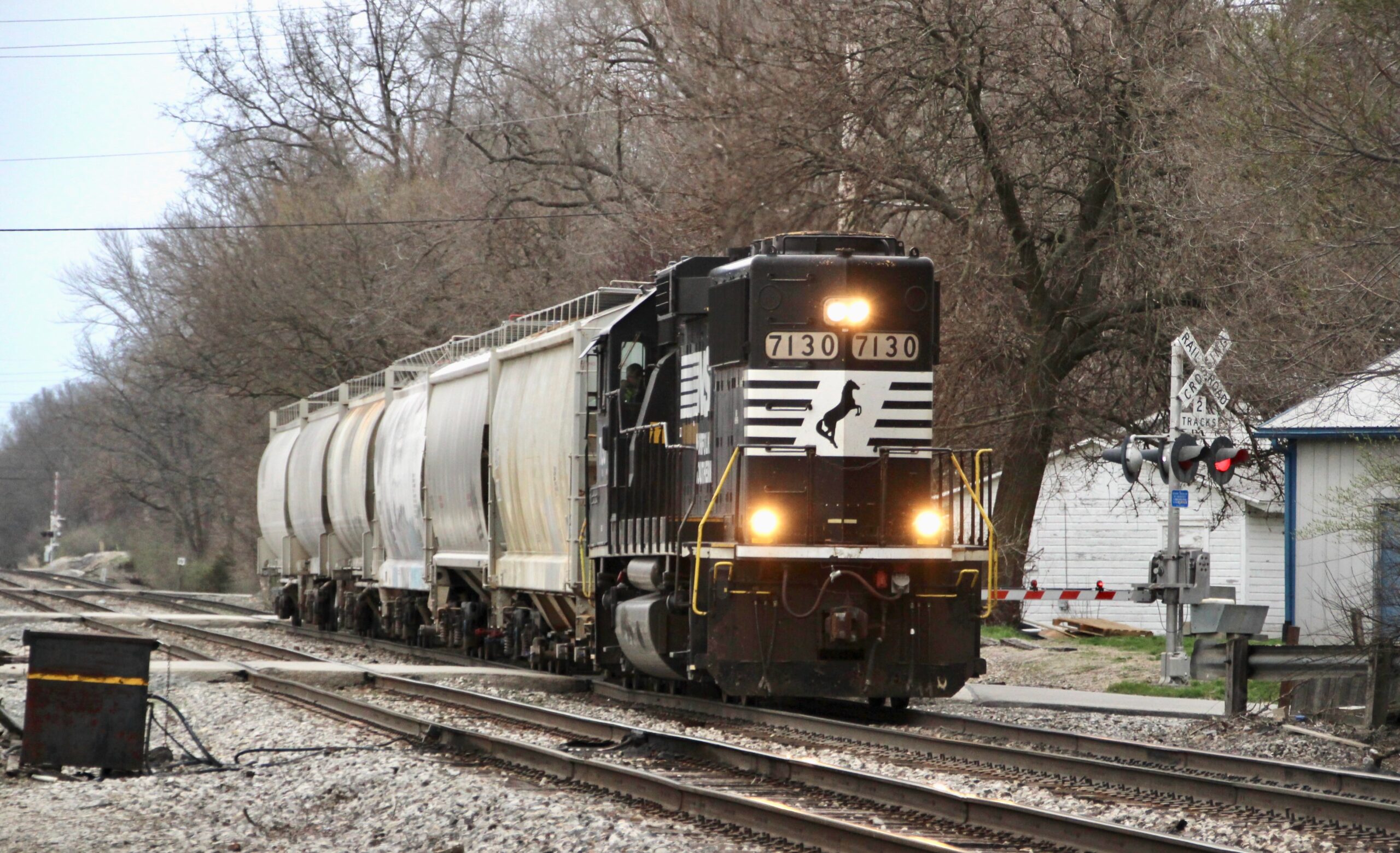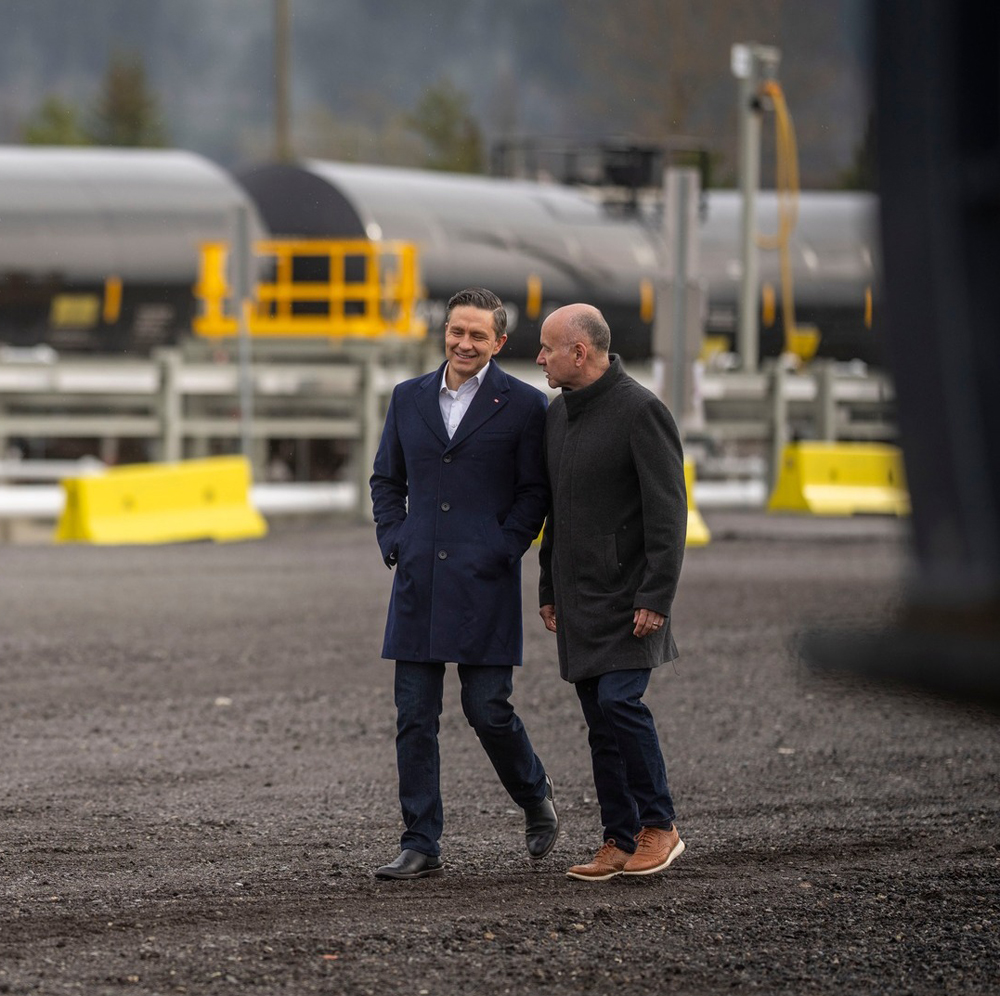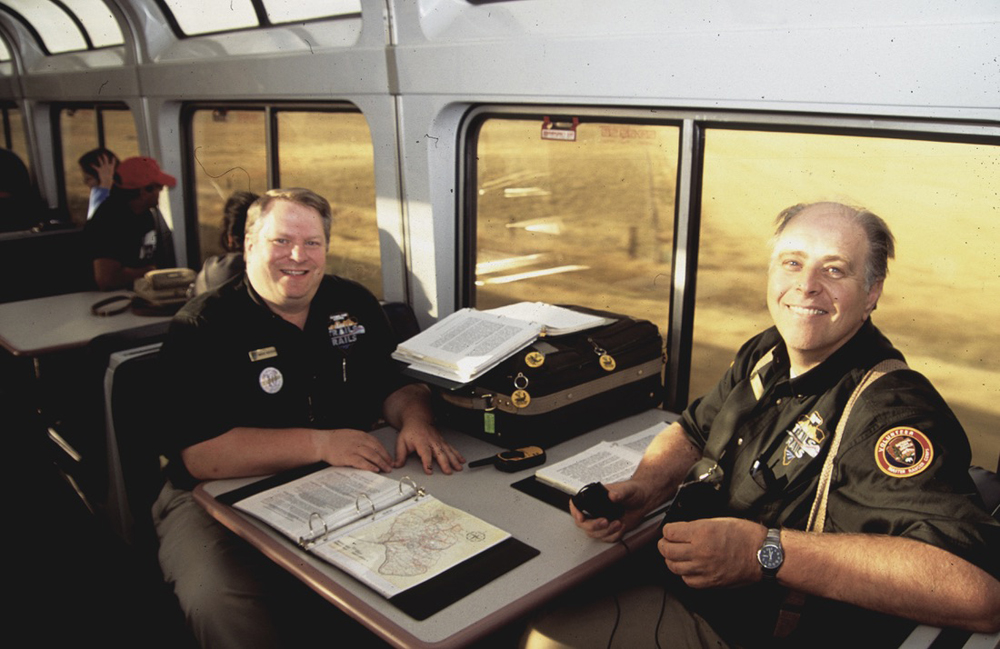
Let’s set aside the railroad industry’s current bout of temporary service problems and discuss something more important. Class I railroads’ local service — which ranges from OK to downright embarrassing — for years has been where the rubber meets the road.
Shippers divert rail shipments to trucks when a local regularly fails to show up, doesn’t deliver the right empties, or can’t pull loads on schedule. Ultimately, frustrated shippers decide to give rail a smaller share of outbound volume. The problem is not rail, per se, but Class I local service that’s often infrequent and generally unreliable.
In a seven-day stretch spanning February and March, for example, CSX Transportation completely missed or only partially switched 1,260 customers. Customers can complain, but the squeaky wheel doesn’t always get oil — even when a railroad is in hot water. Sanimax, a shipper in the Twin Cities, has hauled Union Pacific before federal regulators because it unilaterally reduced service to three days a week from five. Yet service has only gotten worse, with Sanimax saying UP has skipped half of its scheduled switches.
Now consider this: Short line operator Genesee & Wyoming did an analysis of companies that have facilities located on its short lines and Class I railroads. Plants located on G&W shipped 12% more volume by rail than the plants located on Class I lines. Why the difference? Short lines earn this business by offering reliable and frequent service.
G&W’s figures suggest that the big systems are leaving a lot of potential carloads and revenue on the table. Some back-of-the-envelope math says that last year the U.S. Class I railroads would have handled a million more carloads and pocketed more than $3 billion in additional revenue simply by showing up.
Those numbers may underestimate the potential business railroads could drum up from existing customers. Two Watco shortline startups showed stellar growth by offering daily local service, up from five days per week under their previous Class I operators. Watco’s Dutchtown Southern, launched in January 2021, is pulling 47% more loads out of a Louisiana petrochemical complex, which it then hands to partner Canadian National. In the Midwest, volume on Watco’s Decatur & Eastern Illinois is up 28% since taking over for CSX in 2018.
There’s no magic in what short lines do. And Class I roads could provide better local service if they wanted to.

But the big railroads have long viewed local service as a cost to cut, rather than a place to gain traffic and revenue. Every year, headquarters orders division superintendents to boost productivity, which means tighter budgets. Once yards have been consolidated, trainmaster territories extended, and carmen positions reduced, the only thing left to cut is — you guessed it — local service.
The thinking goes like this: If a local goes out and comes back with less than 40 cars, let’s cut it to five days a week from seven. Then later from five days to three. Some shippers might see a local once a week. Now the local train is huge, but crews don’t have time to complete all of their work. Service suffers, and the combination of missed switches and infrequent service can add days or even a week to transit time. And eventually customers reduce their reliance on rail or give up entirely.
Why would railroads do this when carload business typically offers fat profit margins? The relentless quest for earnings growth has backed them into a corner. You’ve got three ways to boost earnings and satisfy investors: cut operating expenses, raise rates, and grow profitable volume. The first two are easy. Adding volume requires a commitment to service and the resources necessary to make it happen.
Granted, the Class I lines face some obstacles that short lines do not. A Class I local may have to dodge road freights in order to work a customer facility on a busy main line, which can lead to the crew skipping that customer or running out of hours and then missing switches for the customers who were next in line.
But clearly more traffic wants to move via rail and is low-hanging fruit for the Class I operations, if only they’d try to harvest it. The obvious solution: Make local service a priority. Run more locals, increase local service frequency, and show up as promised. And if the big systems can’t do that, then they should partner with short lines who can. It would be a win for Class I railroads, short lines, and the railroad industry.
You can reach Bill Stephens at bybillstephens@gmail.com and follow him on LinkedIn and Twitter @bybillstephens














Another example of the oxymoron “railroad management.”
Great article. I have struggled with last Mile freight for years. I can see many different sides to the issue. Class 1s, shippers,consumers, employees, and neighbors. I teach business and also environmental science but I’m also a train fan. And I live near a giant Amazon WH and the NYS&W in NJ. We have to think about what we want our real Network to look like 20 or 30 years from now.
There needs to be some balance between efficiency, profitability and local freight service. We need more small scale intermodal freight facilities.
We also need to plan for expanded passenger service.
Finally we need to prepare for permanently higher diesel prices and the environmental impacts of transportation.
Here are my humble ideas…
Subsidies or regulatory mandates for quality of local freight service.
Help for Short line railroads especially when they compete against monopolies.
Infrastructure spending on right-of-way real estate.
Additional national investment and expansion of sidings, switches, and signals.
Incentives or environmental credits for people that ship by rail.
Pilot projects for quick ship last Mile customers. How fast can we unload a 5 container consist and get the next one in here?
Electrification
The issues are complex but we can build a great 22nd century infrastructure.
Details are important but so is the big picture
Your are completely barking up the right tree!
I’d go as far as saying each RR needs to look at what they want to be in 20 years and then coordinate a path thru AAR and USDOT to get there.
There comes a point where additional traffic may be profitable but is not profitable enough for the Hedge Funds. As currently managed the Class 1’s don’t want that kind of profitable traffic.
The Class 1 RR’s buy back stock rather than invest in the railroad. Eventually 40 mph will be normal for fast freight (FRA Class 3 track). Maybe later 25 mph (Class 2 track).
The longer transit times will require more cars which will not be forthcoming as the money will go into stock buybacks. Transit time will be further reduced as sidings and yard relay tracks cannot handle 3-mile long trains; meets must be saw-by’s and crews will outlaw because meets could entail walking 3 miles on ballast.
Trucking has a big future.
The trucking services have benefitted from over a century of investment in highway infrastructure by we taxpayers. It didn’t just happen organically. The RRs, doing what any business would do, shrank when faced with subsidized competition.
If Staggers had been passed in 1956 instead of 1983, I don’t think we would be seeing the same behaviors in the industry that we see today.
Who was it on the Frisco who said to a Customer group? “you don’t understand, we don’t want to give you better service; we want to get rid of you!”
Come on then Bill Stephens, address the issue this way. It’s not how the carriers could give better service, it’s whether they mean to give any service at all! Don’t put the cart before the horse!
Duh!
Carload traffic isn’t where the RRs should be concentrating. Why? As a general service product, it’s nearly dead. Carload traffic is boutique. Chemicals, plastic, lumber, steel, cement, foodstuff – all going from big places to big places. Sometimes those “big places” are transloading facilities. A lumber yard getting a carload a day – today – dimensional lumber, tomorrow sheetrock? Forget it.
Carload traffic is hard to do and consumes resources at a huge rate. Tying up a main track or controlled siding for an hour so you can switch a lumberyard and brick yard? What’s that mainline worth to you? You win the RR game by concentrating traffic on a route. Local trains eat more than their “fair share” of capacity – this does not show up in the costing models.
Loose car railroading eats up management attention. Nearly all the time and energy of the planning and operating folk us taken up trying to get carload traffic moving when and where it should.
Even running carload road trains is hard. You have to set out and pick up at every serving yard you have. That take time. A lot of time as trains get bigger. And the trains are consuming main track capacity stopping, working and getting going again. PSR or not. …and it’s even worse running huge DPU trains that have to double or triple in and out of every classification yard built for much smaller trains.
Managing the fleet of cars for carload traffic is hard to do. Have empties to load? Where are they? Too many? Where can I send them? Private cars constructively placed? Are they ever getting ordered in? Released? A small army of folk at the Class 1s are dedicated to trying to manage this nearly unmanageable business.
Intermodal is easy, by comparison. It is easy to organize the network train model. It is relatively easy to serve the terminals. The equipment turns fast – many multiples of a carload car.
Intermodal is the future. RRs need to change from carload oriented RRs that happen to have intermodal to intermodal oriented RRs that happen to accommodate boutique carload.
My top three things for RRs to get busy on:
1. Smooth routes. Speed up low speed pinch points. Smooth and superelevate curves. Higher speed X-overs/sidings. Get trains to run at a steady 60 mph.
2. ECP braking – a new generation of it. Not the stuff that’s been in “test” for 30 years. Smart trainline, smart cars. Faster “restricting” speed. No more time wasted pumping air – doing brake tests. (among other things)
3. Electrify heavy routes. Fungible energy supply. Braking energy storage/recovery. Faster acceleration and hill climbing. Simpler locomotive design.
To be fair to your point, Don, carload traffic in UK and in much of the world is long since dead. So that’s to be fair to your point.
What killed carload in UK is short hauls and many passenger trains. We don’t have those conditions in USA. We have long hauls and no passenger trains to speak of. America’s railroads carried lot of carload in generations past, they can do it now.
The carload era worked because there was a ton of backhaul. Raw materials in in a box car, finished goods out. That was the PRR’s secret sauce, so to speak.
Now there is nearly zero reload backhaul taking place. Just about every car goes back “home” empty. Even getting rid of the “return to home road” rules didn’t really change that trend – just slowed it down a bit.
The “shortline trend” just extends the life a bit more, but at the end of the day, all that will be left is the boutique stuff. Bulk, transload, chemicals, plastics, etc.
I’m not saying RRs should ignore it. They do need to manage this traffic as efficiently as possible. But getting that lumber yard to start taking two carloads of traffic each week so the local can tie up the main track at their switch for an hour three times a week (and pull their empties), and also argue with them about maintaining their switch and spur is a losing proposition, in the long run.
The future is not carload. Even the boutique stuff will only grow with the economy, or slightly less.
The future is intermodal. Time to start optimizing track, routes and equipment for that. It’s the “Big Dog”. Carload is the tail.
Carload traffic isn’t dead in Europe. It’s a pretty stable boutique product. They do the “short, fast” train thing because they have to fit in the flow with intermodal and conventional passenger traffic.
They do lots of things to squeeze out dwell. For example, they depart trains right from class yard, have “bright” routes out of the yards on to the main, have high level platform, step on, step off crew changes.
In the end, they do about as well economically with their carload traffic as the US does.
One more thing you’re forgetting…giant warehouses, remember, with no inventory tax you can conceivably store months worth of products in extra large warehouses…and how do you fill those extra large warehouses, with carloads of products. Better yet, make that extra large warehouse your retail outlet as well…costs drop dramatically and prices to consumers can be reduced, increasing demand…etc.,etc.,etc.,etc.
Two comments on giant warehouses.
One, is, that is exactly what I mean say carload is boutique. Giant distribution centers. That kind of service is Kellogg cereal and Budwiser beer in, mixed goods out to stores. They currently exist but are almost exclusively truck/intermodal.
Two, there is more to inventory that tax. The carrying cost of inventory is mostly the value of the goods.
Nobody is building such facilities tells you the economics probably aren’t there.
I have been saying for 30+ years that the Class 1’s need to contract their local service to shortlines and leave the long hauls for themselves. Let the A Shortline RR switch around this town and over on that line, let G Shortline Link handle the local stuff on an adjacent line, and have both companies pre-block all the traffic for pick up by the through train and let that Class 1 deliver it to R Short Line Company for delivery.
And then watch traffic explode.
Ruppert – See my comment above. One word: unions.
Agreed. I have witnessed it. When WATCO began switching a plant some years back, the RR that HAD been switching said plant saw its crews jamming the inbound yard with so many cars WATCO could bare switch the facility. It took MONTHS to straighten out the yard and establish a proper routine. In the end, WATCO helped to TRIPLE the plant’s output with better service. And in the end, CSX and NS needed more crews to handle the additional traffic!
I think if we ever want to fix the monopoly mentality of the Class 1’s, the key is in the last sentence. Let the short lines provide the local service and run the terminals. The Class 1’s can run their land barges and get the economy of scale. They can even partner to expand their networks to be transcontinental. Where the government sees the need to provide passenger service, the state should buy or use eminate domain to operate and dispatch. Everyone has their piece of the pie and prosper together
Nathan good idea, but one huge problem is that there are not enough tracks. I’m not talking about yards or even mains. When you look at pictures of rail lines in the past there were many parallel tracks along the mains that were used as witching leads to customers and as a place for local to get out of the way. Most of those are gone on mainlines.
The even bigger problem would be getting unions signed on to the idea of letting shortlines handle local and/or terminal business. It’s a sound concept that I’ve thought of myself, but like many great concepts, it gets crushed by the brick wall of reality.
One of the tenets of PSR is “make everyone take 7 day a week service and release a steady flow of cars each day”.
So, maybe RRs aren’t really doing PSR?
FWIW, I think trying to bend shipper/receiver behavior to optimize their transportation parnter’s operation is the tail wagging the dog.
I can sum it up in two sentences: Railroads should serve their customers or the government will pretty much confiscate the railroads. The railroad may think it’s based in Omaha, Atlanta, Jacksonville or North Fort Worth, but it will actually be run out of Washington, D.C.
Memo to Railroads: there’s two Surf Boards. One is on the cover of a Beach Boys album, the other is headed by the most capable appointee of the Biden Administration. Take your pick.